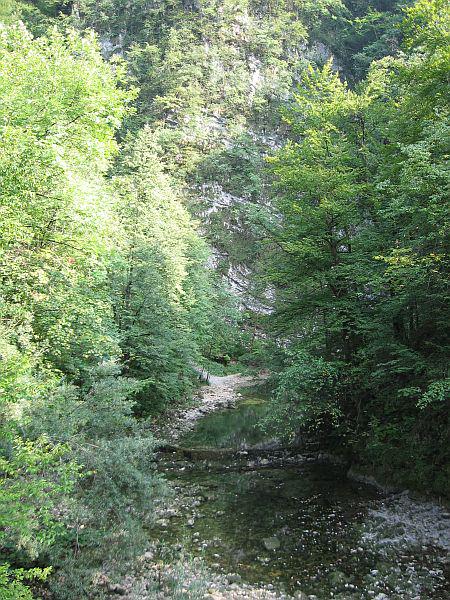
The western Slovenian town of Idrija is famous for its mercury mine, which has recently been designated a UNESCO World Heritage site. But not far from the town, a little-known nature preserve along the Idrijca River serves a veritable treasure trove for nature-lovers and explorers.
The Upper Idrijca Landscape Park is characterized by a surprising diversity of natural landscapes. The protected area measures approximately 30 kilometers in length, and its altitude ranges between 300 and 1400 meters. The significant variations in the local microclimate, along with an abundance of rainfall in the area, enables a wide variety of plant life to thrive along the banks of the river. Various varieties of primroses are especially common.
Over the years, this abundance of plant life in the area has attracted numerous botanists, including such well-known names as Giovanni Antonio Scopoli, Balthasar Hacquet, and Henrik Freyer.
It was here that Scopoli discovered a flower with green leaves and gentle, purplish flowers. However, the botanist didn’t realize that the purplish flower was a new species, and he ignored it. It took the French polymath Balthasar Hacquet, who spent several years in Slovenia, to recognize its uniqueness. He quickly alerted botanists to the discovery, and the flower was dubbed scopolia carniolica – the Carniolan primrose, which is endemic to Slovenia.
Scopoli made his discovery in one of the most unique areas of park – on the banks of Divje Jezero, meaning "Wild Like" in Slovenian. The lake is the source of one of Idrijca’s tributaries and is surrounded by forests, which gives it a distinctive, turquoise color. It is small in area but very deep. So far, it has been explored to a depth of 160 meters, but it may be much deeper; the lake is notoriously dangerous for divers, several of whom have died exploring its depths.
The Landscape Park is also rich in animal life. Grouse and lynx all make their home in the area. While wild animals tend to be difficult to spot, the park does give visitors a chance to explore nature first-hand. An interpretive nature trail make sits way through a section of the park, and a botanical garden established by Scopoli brings together diverse plant life in a single area.
The Landscape Park was officially protected in 1992. Despite its wild beauty, it remains little-known – and that makes it even more of a delight for nature-lovers.

































































